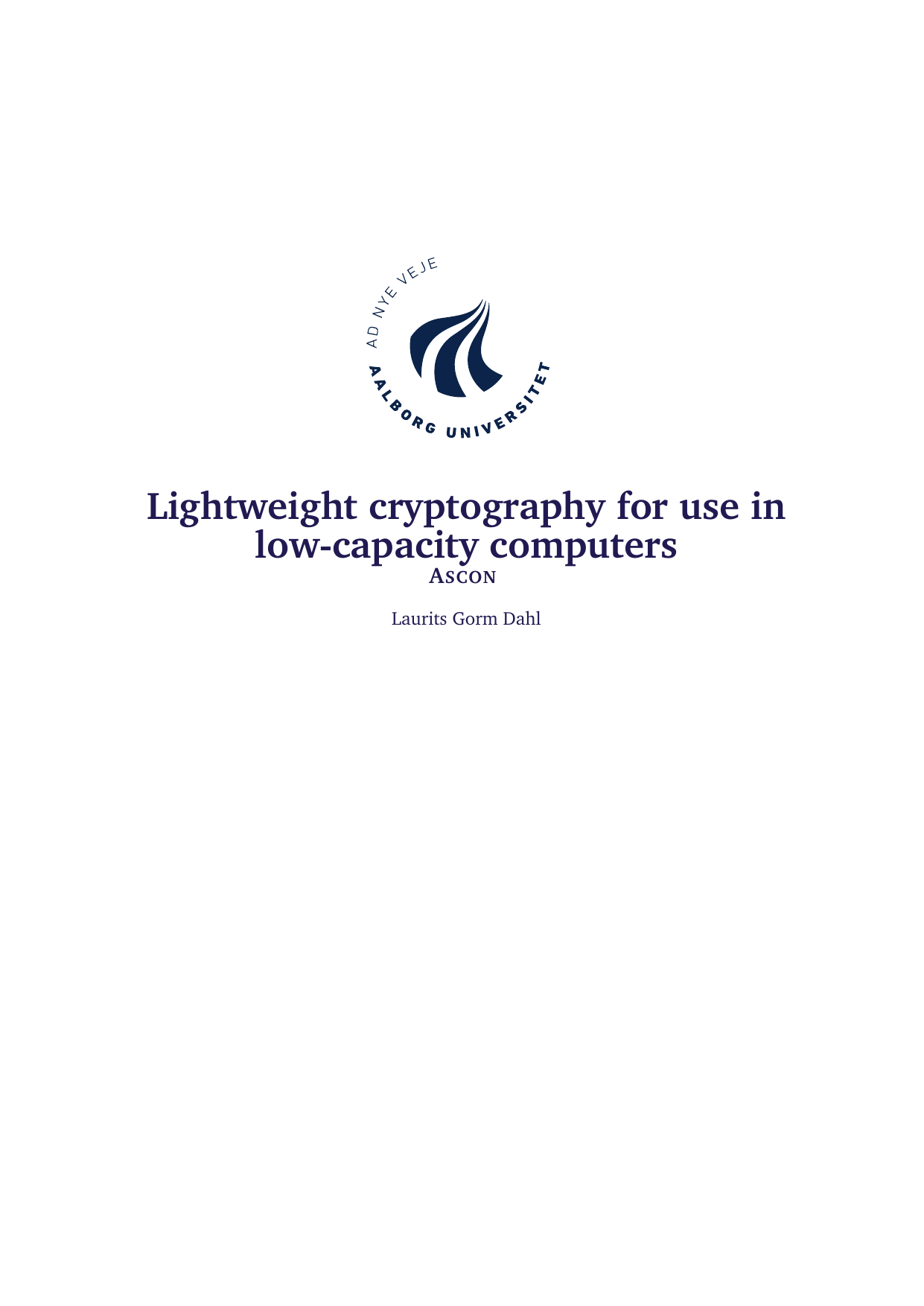
Lightweight cryptography for use in low-capacity computers: ASCON
Author
Term
4. term
Education
Publication year
2024
Submitted on
2024-06-03
Pages
82
Abstract
This thesis investigates lightweight cryptography with a focus on the AEAD Ascon cipher. It offers an overview of lightweight cryptography principles and practical applications, alongside an in-depth analysis of Ascon ’s security and efficiency. The thesis begins with foundational cryptographic concepts and key aspects of cryptanalysis, including various attack types. It proceeds to examine the design considerations and requirements of lightweight cryptography. An exploration of the AEAD Ascon cipher follows, detailing its encryption schemes, phases, permutation process, and security properties, and comparing Ascon -128 with AES-128-GCM. Cryptanalytic techniques, such as linear, differential and differential-linear cryptanalysis, are also explored. Confidentiality and authenticity, particularly under state recovery, are addressed, with a focus on Ascon ’s nonce-respecting setting and the necessity of its key blinding technique for authenticity. An experimental analysis of the randomness of Ascon ’s permutations concludes the thesis.
This thesis investigates lightweight cryptography with a focus on the AEAD Ascon cipher. It offers an overview of lightweight cryptography principles and practical applications, alongside an in-depth analysis of Ascon ’s security and efficiency. The thesis begins with foundational cryptographic concepts and key aspects of cryptanalysis, including various attack types. It proceeds to examine the design considerations and requirements of lightweight cryptography. An exploration of the AEAD Ascon cipher follows, detailing its encryption schemes, phases, permutation process, and security properties, and comparing Ascon -128 with AES-128-GCM. Cryptanalytic techniques, such as linear, differential and differential-linear cryptanalysis, are also explored. Confidentiality and authenticity, particularly under state recovery, are addressed, with a focus on Ascon ’s nonce-respecting setting and the necessity of its key blinding technique for authenticity. An experimental analysis of the randomness of Ascon ’s permutations concludes the thesis.
Keywords
ASCON ; lightweight ; letvægt ; kryptografi ; cryptography
Documents
